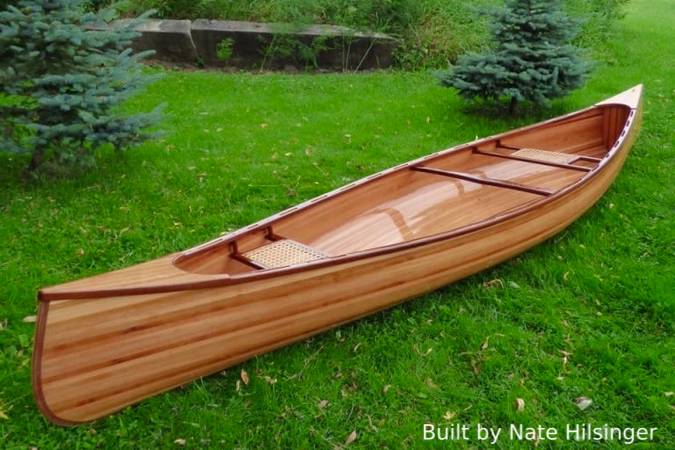Choosing the Best Wood for DIY Canoe Construction

Choosing the Best Wood for DIY Canoe Construction
Building a canoe from scratch is a challenging yet rewarding endeavor. The choice of wood plays a crucial role in the canoe's performance, durability, and aesthetics. Numerous wood species possess unique properties that make them suitable for different canoe designs and uses. This article explores some of the most popular wood choices for DIY canoe construction, providing insights into their strengths and weaknesses.
Considerations for Selecting Wood
Before delving into specific wood species, it's essential to understand the key factors to consider when choosing wood for a canoe:
Strength and Durability
Canoes endure significant stress from paddling, weight, and water pressure. The wood's strength and durability are paramount to prevent cracks, splits, and deformation.
Water Resistance
Canoes are exposed to moisture, making water resistance a critical factor. Certain woods are naturally resistant to rot and decay, prolonging the canoe's lifespan.
Weight
A canoe's weight directly impacts its maneuverability and paddling efficiency. Lighter woods enhance performance, while heavier woods may require additional effort.
Workability
The ease with which wood can be shaped, cut, and joined is crucial for DIY construction. Some woods are more forgiving than others, especially for beginners.
Aesthetics
The canoe's appearance is a significant factor for many builders. Various woods offer distinctive grains, colors, and finishes, allowing for personalized aesthetics.
Availability and Cost
The availability and cost of wood can vary greatly. Some species may be readily accessible locally, while others require special sourcing. Cost considerations play a vital role in the overall project budget.
Popular Wood Choices for Canoe Construction
Cedar
Cedar is a classic choice for canoe construction, renowned for its lightweight, rot-resistant properties, and beautiful grain patterns.
- Advantages: Lightweight, naturally rot-resistant, aesthetically pleasing grain, readily available, works well with traditional canoe designs.
- Disadvantages: Can be relatively soft, susceptible to denting, may require additional reinforcement in high-stress areas.
Spruce
Spruce, particularly Sitka spruce, is highly prized for its strength-to-weight ratio, making it an excellent choice for high-performance canoes.
- Advantages: Lightweight, strong, stiff, relatively easy to work with, produces a resonant sound when paddled.
- Disadvantages: Not as rot-resistant as cedar, prone to denting, may require additional protection from moisture.
Oak
Oak, known for its durability and strength, has traditionally been used in canoe construction, especially for ribs and frames.
- Advantages: Extremely strong and durable, water-resistant, long lifespan, adds structural integrity to canoes.
- Disadvantages: Heavy, difficult to work with, more expensive than other options, may not be ideal for lightweight designs.
Pine
Pine, particularly white pine, is a readily available and affordable wood suitable for canoe construction.
- Advantages: Lightweight, relatively easy to work with, affordable, good workability, provides a classic look.
- Disadvantages: Not as strong or durable as other woods, susceptible to rot and moisture damage, may require more maintenance.
Cherry
Cherry is a beautiful and durable hardwood that offers an elegant finish for canoes.
- Advantages: Beautiful reddish-brown color, strong and durable, excellent workability, resists rot and decay.
- Disadvantages: Relatively expensive, heavier than cedar or spruce, may require specialized tools for working with.
Ash
Ash, renowned for its strength and flexibility, is a popular choice for canoe ribs and frames.
- Advantages: Strong, flexible, shock-resistant, holds its shape well, good for high-stress areas.
- Disadvantages: Relatively heavy, can be more difficult to work with, may not be readily available in all regions.
Other Wood Considerations
Beyond the primary species mentioned above, several other woods find use in canoe construction, often for specific purposes:
Mahogany
Mahogany, known for its beauty and durability, is sometimes used for canoe decks and trim.
Walnut
Walnut, a rich, dark wood with a unique grain pattern, is sometimes used for canoe trim and accents.
Teak
Teak, renowned for its water resistance and durability, is occasionally used for canoe decks and seats.
Conclusion
The choice of wood for DIY canoe construction depends on individual preferences, intended use, and skill level. Cedar, spruce, and pine are popular choices for their balance of strength, durability, weight, and workability. Oak and ash offer exceptional strength for high-stress areas, while cherry, walnut, and mahogany enhance aesthetics and durability. Consider factors like strength, durability, weight, workability, aesthetics, availability, and cost before selecting the best wood for your canoe project. Thorough research and consulting with experienced canoe builders can provide invaluable guidance in choosing the right materials for a successful and rewarding canoe building experience.
0 comments:
Post a Comment